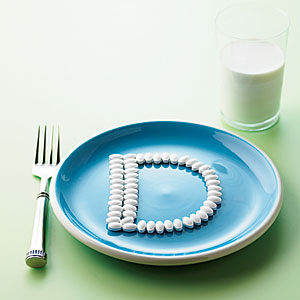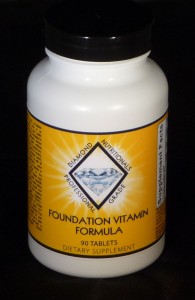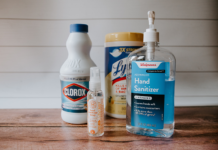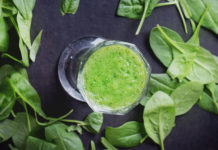by: Dr. Craig A. Maxwell
For decades you’ve been lead to believe one of the most unfortunate untruths in the medical community. You’ve been told you can get cancer from the sun with limited, everyday exposure. I’m glad to tell you nothing could be further from the truth. If you’ve been slathering on gobs of store-bought sunscreen to protect yourself from melanoma and other skin cancers, you may actually be increasing, not decreasing, your risk.

Can You Really Get Cancer from the Sun?
So many people hide from the sun as soon as the weather gets warmer. They load up on the sunscreen and wear hats, sunglasses, and long-sleeved shirts even if they’re only going to be outside a short time. Believe it or not, this practice doesn’t protect you from skin cancer. It can increase your chance of getting skin cancer. I’ll explain why in a moment.
Can you get cancer from the sun? Yes, if you’re overexposed. I tell all my patients regardless of their skin color, you cannot “bake” in the sun for hours. It causes skin damage on a cellular level and can leave you at risk for the development of skin cancer. Plus, excessive tanning prematurely ages your skin making it look old, wrinkled, and leathery.
Vitamin D3 – The Missing Link in Melanoma Skin Cancer
When I first see a patient for any chronic health problem, I automatically check his or her vitamin D3 levels. This is because 85% of my patients are deficient in this essential steroid hormone on their initial screening, which correlates with nationwide studies.

I recommend a target range of 40-100 ng/ml and most folks fall way below this line. Scientific research has shown that incidents of melanoma skin cancer are highest among indoor workers. What’s more, melanoma lesions are often found on parts of the body that are the least exposed to the sun.
Case #1: I have a female patient, 27 years of age, with very pale skin. A mole on the inside of her left leg looked dark and suspicious. It was removed and she was found to have stage 1A melanoma. This was a young woman who had critically low levels of vitamin D and wore sunblock each time she stepped outside for more than 10 minutes. She was not a sunbather and rarely burned. Her vitamin D3 level was raised back to therapeutic levels. She continues to do well.
Case #2: Another patient of mine, a 60 year old male, presented with a 1.2 centimeter growth on his scalp directly above his left ear. He had a thick head of hair, so the sun did not reach this area. He was not a sunbather, and spent only minimal amounts of time in the sun. The area had to be shaved to view and remove the growth. Pathology revealed it to be a stage 2B melanoma. As I do with all patients when skin biopsies/excisions reveal cancer, he was referred to a Moh’s surgeon, where deeper biopsies revealed that the initial lesion had been completely excised. Lymph node biopsies and further testing were also negative. His vitamin D3 level was extremely low, and he was placed on vitamin D3 5,000 IU daily. He continues to do well.

If what’s been said about the connection between skin cancer and sun were true, then these two individual should have been the last to ever come down with the most deadly form of skin cancer.
These are just two examples of patients who do not fit the “typical” skin cancer patient profile. I have hundreds of such examples in my files, acquired over thirty years of practice.
There has been no research to back up the claim that melanoma and other skin cancers are caused by limited, daily sun exposure. There has been, however, strong evidence to the contrary. A report in The Lancet suggests that regular sun exposure can actually have a protective effect on the skin.
When you have optimal levels of vitamin D3 in your body, it helps boost your immune system, which is more likely to help developing pre-cancer or cancer cells self-destruct. It also reduces the spread of cancer cells. A recent report has also suggested that optimal vitamin D levels can reduce the incidence of breast cancer. Vitamin D increases the production of a tumor suppressor called 15-PGDH.
To see if your vitamin D levels are at the optimum range, I highly recommend getting a blood test. I use the Vitamin D 1,25 Hydroxy Test from Direct Labs for my patients. You can do so as well. Simply order the test, visit the nearest LabCorp drawing station and your results will be sent to you within within a week.
A vitamin D3 blood level check is one of the soundest investments you can make in your health as low vitamin D levels can lead to myriad diseases.
Sunscreen Can Cause Skin Cancer
The sunscreen myth is one that has bothered me for years. I’ve watched as more and more products with higher sun protectant factors (SPF) arrive on the scene while incidents of skin cancer climbed.
A tan is not just a way to look attractive in the summertime. It has a functional purpose; to protect your skin. Clinical research has indicated that sunscreen may cause much more damage than it prevents. This is because it blocks your skin’s production of melanin, a pigment that causes you to tan.
The big one with sunscreen is that it prevents your body from manufacturing its own vitamin D3. This is the number-one cause of critically low vitamin D3 levels in this country. A sunscreen with only an SPF of 8 can block your body’s ability to make vitamin D3 by 95%!
The worst part about conventional, store-bought sunscreen is the dangerous, cancer-promoting chemicals they contain.
These chemicals include:
Retinyl Palmitate
This synthetic version of vitamin A turns into a potent carcinogen when mixed with the sun. This means whenever you use a sunscreen containing it and step into the rays, you’re increasing your risk of cancer.
Diazolidinyl Urea
This formaldehyde-releaser is a known carcinogen found in many commercial sunscreens.
Methylparaben
Parabens are endocrine disruptors that interfere with your body’s natural production of hormones. Anything that disrupts this critical function can hasten the development and spread of multiple types of cancer.
Phthalates
These plasticizers have been proven to have mutagenic and carcinogenic affects.
Oxybenzone
Another powerful hormone disruptor, oxybenzone, has been linked to the development of nervous system disorders and vascular disease.
These are only a few of the examples of the potentially-dangerous chemicals in store-bought sunscreens. It is very important to read labels on any skincare product you purchase as many cosmetics, lotions, and creams also contain these and other harmful synthetics.
Protect Yourself from Skin Cancer the Right Way
You can reduce your chances of skin cancer easily if you take good care of your health, optimize your vitamin D levels, and protect your skin with clothing and natural sunscreen.
Dietary Changes 
The first bit of advice I give to any patient concerned about a health problem is to clean up their diet. A diet filled with junk food introduces more synthetic chemicals into your body and reduces the necessary nutrients you need to stave off disease. The more whole and minimally-processed food you take into your system, the better your health.
If you have fairer skin, I advise you to also incorporate more skin-protectant foods into your diet. These foods include stewed tomatoes, watermelon, red pepper, carrots, oranges, blueberries, dark chocolate, spinach, and wild-caught fish.
Naturally red and orange foods are rich in skin-protecting lycopene that helps prevent sunburn from the inside out. All organic produce contains antioxidants and carotenoids that reduce sun damage, premature aging, and cancer. Wild-caught fish contains naturally omega-3 fatty acids, which prevent inflammation and disease.
Adequate Sun Exposure to Optimize Vitamin D3 Levels
In order to reduce your chance of skin cancer, you need to get adequate sun exposure. This exposure optimizes your vitamin D levels to protect you against disease. I recommend 20-30 minutes of sun exposure on the face, arm or legs 2-3 times a week. You don’t even need a swimsuit! This produces anywhere from 10,000-20,000 IUs of vitamin D3 in your body naturally. This limited sun exposure is not dangerous, but healthy, and helps reduce the development of skin cancer.
Beyond 20-30 minutes of sun exposure, your skin will not produce more than 10,000-20,000 IU of vitamin D3, so there is no way to “overdose” through sun exposure. More than 20-30 minutes 2-3 times a week is not beneficial.
Protective Clothing
If you will be out in the sun for longer than the recommended time, I advise making use of protective clothing such as wide-brimmed hats, long-sleeved tops, and long pants. The material should be light and breathable to avoid overheating.
Natural Sunscreen
If you’re planning to spend the day on the beach, take a natural, organic sunscreen with you. The best sunscreens are organic, contain limited chemicals, and have an SPF factor of 40 or below. I’ve recently developed a line of zinc-oxide and titanium-oxide based sunblock that protect and nourish your skin without dangerous chemicals.

Daily Replenishing Sunblock – SPF 30+ – This moisturizing sunblock blocks the sun’s harmful rays if you plan to be out for an hour or more. Completely hypoallergenic, this sunblock absorbs quickly for an oil-controlling matte finish. It is water resistant for up to 80 minutes.
Replenishing Sunblock – SPF 36 – Ideal for mature skin, this formula offers heightened skin protection while boosting natural collagen production. It even decreases the look of fine lines and wrinkles with silica particles that act as light diffusers.
Supplements
During the winter months or if your vitamin D levels are critically low, I recommend adding Diamond Nutritionals’ Vitamin D3 5,000 IUs. This ensures that there are no critical gaps in your vitamin D levels when you’re not able to get out in the sun as much. It is fine to take year-round as well, as I have for years.
I also strongly advise using a quality multivitamin and mineral supplement: Diamond Nutritionals’ Foundation Formula. This formula is unlike anything you’ve found in the supermarket or pharmacy. Many store-bought vitamins contain various synthetic ingredients, meaning they are not easily absorbed by your body. They also may contain dangerous additives, preservatives, and dyes that could further damage your health.
Diamond Nutritionals’ Foundation Formula contains only your daily dose of balanced vitamins and minerals to fill in any gaps in your diet.
These nutrients include:
Vitamin A – 7,500 IU
Vitamin C – 500 mg
Vitamin D3 – 500 IU
Vitamin E – 100 IU
Vitamin K – 50 mcg
Riboflavin – 25 mg
Niacin – 25 mg
Vitamin B6 – 38 mg
Folic Acid – 400 mcg
Vitamin B12 – 500 mcg
Biotin – 200 mcg
Panthothenic Acid – 150 mg
Calcium – 100 mg
Iodine – 113 mcg
Magnesium – 200 mg
Zinc – 10 mg
Selenium – 100 mcg
Copper – 1 mg
Manganese – 2.5 mg
Chromium – 200 mcg
Molybdenum – 25 mcg
Potassium – 50 mg
Choline Bitartrate USP – 50 mg
Inositol – 50 mg
Mixed Tocopherols – 50 mg
Lipoic Acid – 25 mg
N-Acetyl-Cysteine USP – 25 mg
Rutin – 25 mg
Lutein – 3 mg
Boron – 1.5 mg
Lycopene – 1 mg
Vanadyl Sulfate Hydrate – 1 mg
Optimize your vitamin D3 levels with 20-30 minutes of sun exposure 2-3 times a week. Never bake in the sun or allow your skin to become burned. Have your blood levels checked for a vitamin D3 deficiency and add a vitamin D3 supplement to your diet if the levels are below 40ng/ml.

A question I am often asked is about taking a vitamin D3 supplement during the sunny months. This is fine, as our bodies will not overproduce vitamin D3 from the sun if our blood levels are normal. We were created with a built-in feedback mechanism, so our bodies know whether we need more manufactured from sun exposure.
There’s no need to be afraid of the sun so long as you’re safe and observe common-sense practices. Go out and have fun!









